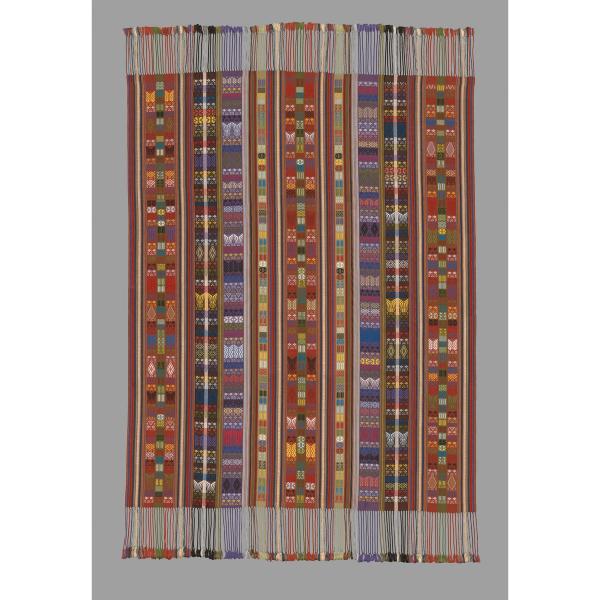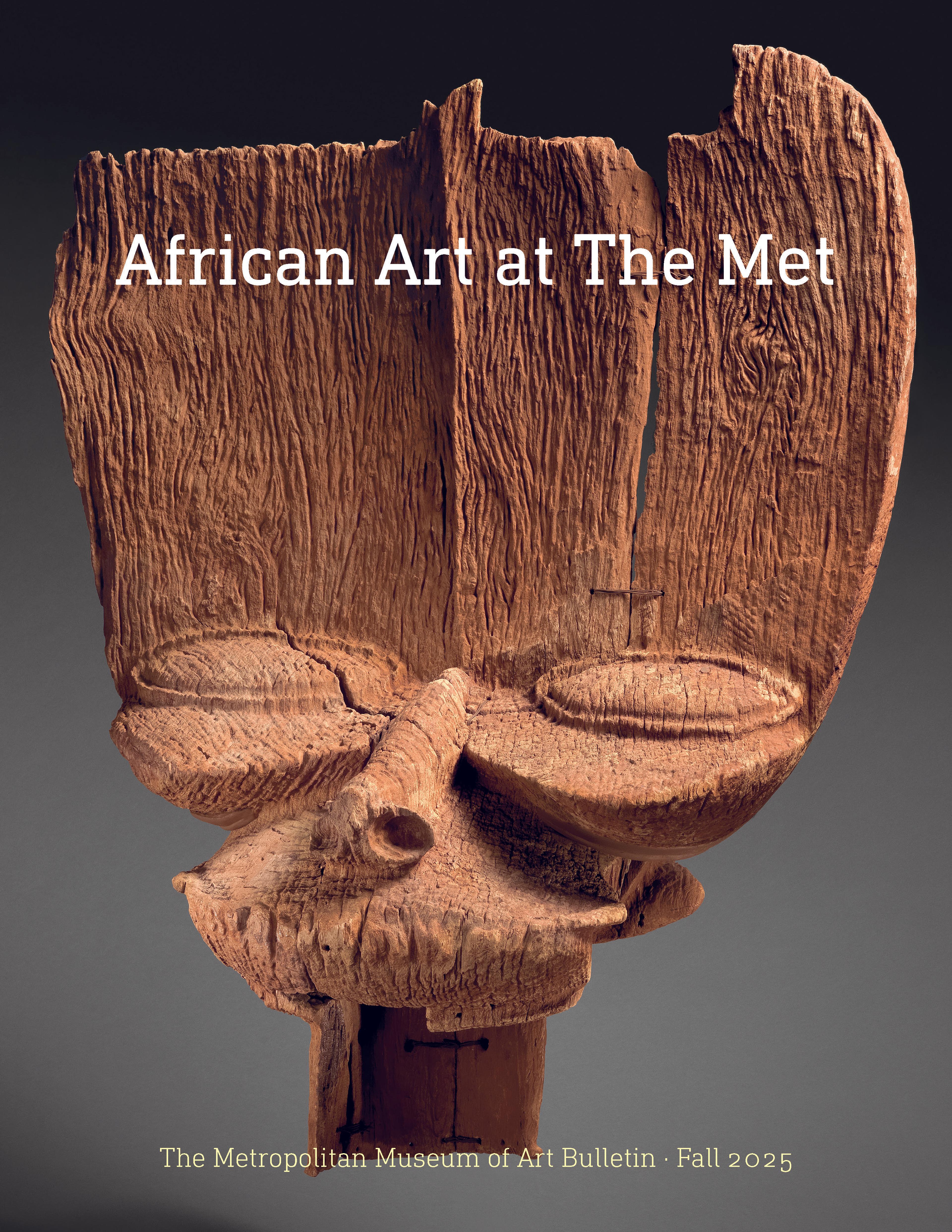Lamba mpanjaka marevaka (king’s bright mantle)
The Merina and Betsileo people are the main silk weavers in Madagascar. Until recently weaving was a female vocation. In order to weave bands of complex pattern, Merina weavers adapted their looms to include one or more supplementary heddles suspended above. Each of these could then be manipulated to produce a band of pattern floating across the warp of the textile. Many of these patterns are derived from local trees and flowers. Predominant among them are believed to be variations on "The Tree of Life" motif.
During the colonial period, patronage of such works by the local aristocracy gradually diminished. In recent years an innovative group of weavers from the town of Arivonimano, near the capital Antananarivo, have studied historical works conserved in the collection of The British Museum as a point of departure for renewal of their heritage. Among them is the master weaver Martin Rakotoarimanana who produced this work for display. It is not a literal replica of a historical prototype but rather an inspired departure that reflects the same demanding mastery of the medium achieved in the nineteenth century.
Artwork Details
- Title:Lamba mpanjaka marevaka (king’s bright mantle)
- Artist:Martin Rakotoarimanana (b. 1963, Avironimamo, Madagascar)
- Date:1998
- Geography:Madagascar, Antananarivo
- Culture:Merina peoples
- Medium:Silk, pigment
- Dimensions:L. 108 x W. 70 1/8 in. (274.3 x 178.1 cm)
- Classification:Textiles-Woven
- Credit Line:Purchase, Rogers Fund and William B. Goldstein Gift, 1999
- Object Number:1999.102
- Curatorial Department: The Michael C. Rockefeller Wing
Audio

1557. Lamba mpanjaka marevaka (king’s bright mantle), Martin Rakotoarimanana
Joël Andrianomearisoa and Simon Peers
JOËL ANDRIANOMEARISOA: Textile is part of our life and we can't live without textile. We are born on a textile, and when you die, we are dying also in a textile. You can also change many things through textiles. When you go in a performance, when you open the curtain, it's the beginning. When you close the curtain, it's the end.
ANGELIQUE KIDJO (NARRATOR): That is Joël Andrianomearisoa, a contemporary artist born in Antananarivo, Madagascar. The textile you see here is an elaborate handwoven creation from the Malagasy highlands.
In the 19th century, aristocratic Merina weavers developed the akotifahana, or discontinuous supplementary weft technique, and they began integrating newly available imported silk into their creations.
Here is Simon Peers, an expert on Malagasy textiles.
SIMON PEERS: There are accounts in the 18th century of dyes and silk being imported into Madagascar and being used by the Malagasy for weaving, as well as dyes from India and elsewhere. The Chinese silkworm being raised in Madagascar was established really from the 1820s. And so the Bombyx mori silk has been produced here ever since then, and it continues to this day.
You do see photographs from the 19th century of people wearing these textiles, and they were used as an elaborate display of wealth and prestige really.
ANGELIQUE KIDJO: Textiles remain essential in contemporary Malagasy life, weaving the threads that connect Madagascar with traditions across the Indian Ocean.
JOËL ANDRIANOMEARISOA: After the food market, the textile market is the most important market in Madagascar. Everywhere, we are consuming a lot of textile. We are producing, but we are also taking something from abroad, from all around the world. This is for me, and I’m insisting a lot on this—geographically, we are not far from Africa, but we are from Asia, from Pakistan, from India, even China, we have a lot of connection.
###
Music: Diavolana/Moonlight by Kaluvau.
More Artwork
Research Resources
The Met provides unparalleled resources for research and welcomes an international community of students and scholars. The Met's Open Access API is where creators and researchers can connect to the The Met collection. Open Access data and public domain images are available for unrestricted commercial and noncommercial use without permission or fee.
To request images under copyright and other restrictions, please use this Image Request form.
Feedback
We continue to research and examine historical and cultural context for objects in The Met collection. If you have comments or questions about this object record, please contact us using the form below. The Museum looks forward to receiving your comments.
